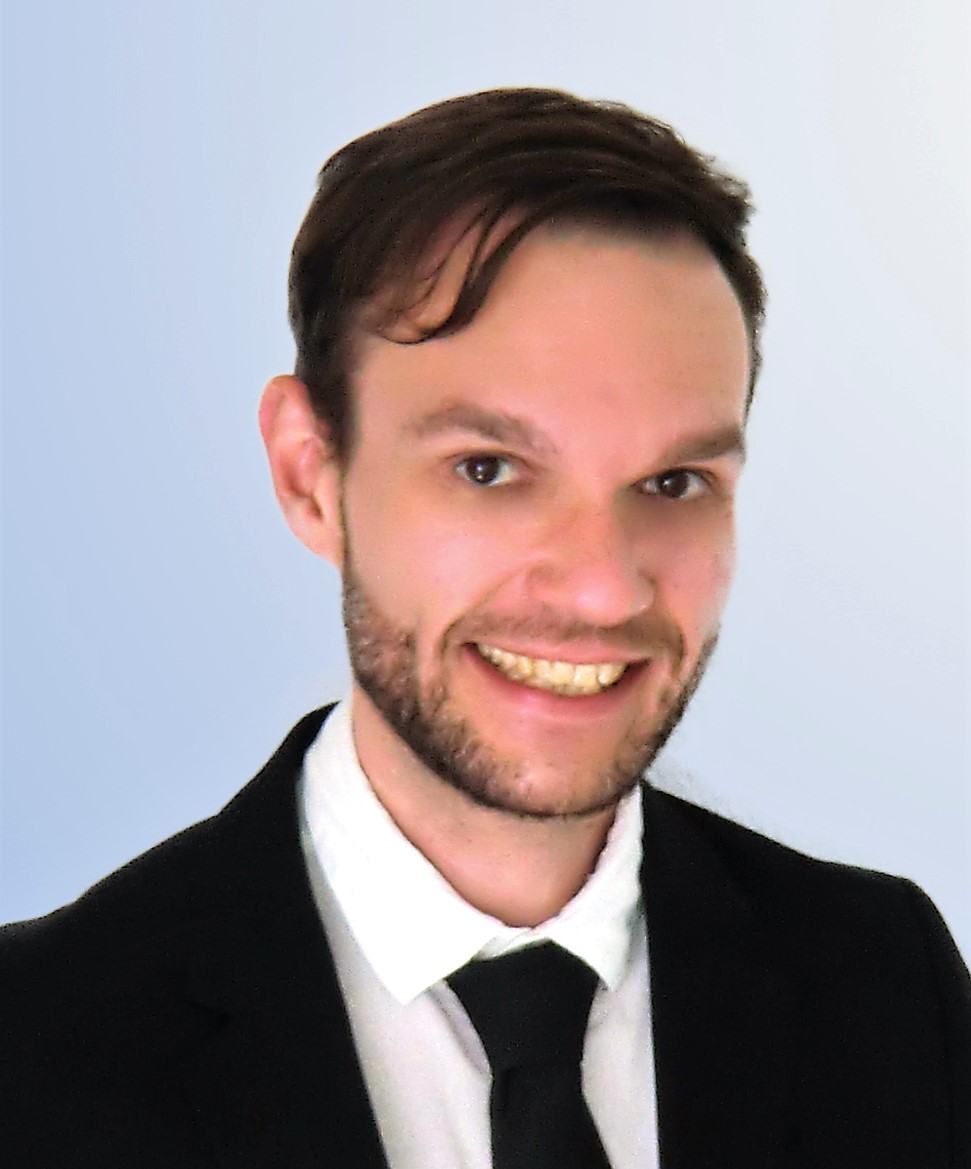Thomas Deinlein
Dr.-Ing. Thomas Deinlein
Short Biography
Thomas Deinlein is currently working towards the Ph.D. degree in the computer science at the chair for computer networks and communication systems at the university Erlangen-Nürnberg. Thomas received his bachelor of engineering degree (B.Eng.) in computer science (Informatik) at the university for applied sciences Würzburg-Schweinfurt in March 2015 with study focus IT-security. By the end of his bachelor study he received a scholarship of the Studienstiftung des deutschen Volkes (e.V.). After his bachelor study he decided on a master study of computer science with study focus automotive engineering at the university Erlangen-Nürnberg which he finished in May 2017 with the master of science degree (M.Sc.).
More Information
2021
- , , :
On the Simulation of Vehicular Networking Scenarios in Multi-Story Parking Garages
13th IEEE Vehicular Networking Conference (VNC 2021) (Virtual Conference, 2021-11-10 - 2021-11-12)
In: Proceedings of the 13th IEEE Vehicular Networking Conference (VNC 2021), Virtual Conference: 2021
DOI: 10.1109/VNC52810.2021.9644620
BibTeX: Download - , , , :
On the Impact of Buildings on the LoS Evaluation in System-Level V2I/N Simulations
2021 IEEE 94th Vehicular Technology Conference (VTC2021-Fall) (Virtual Conference, 2021-09-27 - 2021-09-30)
In: 2021 IEEE 94th Vehicular Technology Conference (VTC2021-Fall) 2021
DOI: 10.1109/vtc2021-fall52928.2021.9625489
BibTeX: Download - , , , , , :
On the Impact of priority-based MAC Layer Scheduling in 5G V2N multi-application Scenarios
13th IFIP Wireless and Mobile Networking Conference (WMNC) (WMNC 2021) (Montreal, Canada (Virtual Conference), 2021-10-21 - 2021-10-22)
In: 13th IFIP Wireless and Mobile Networking Conference (WMNC) (WMNC 2021) 2021
DOI: 10.23919/wmnc53478.2021.9619001
BibTeX: Download - , , , :
An Evaluation of the Communication Performance of MEC-Dependent Services in 5G Networks
The 20th IEEE International Symposium on Network Computing and Applications (NCA 2021) (Boston, MA, USA, 2021-11-23 - 2021-11-26)
DOI: 10.1109/NCA53618.2021.9685999
URL: https://ieeexplore.ieee.org/document/9685999
BibTeX: Download
2020
- , , :
5G-Sim-V2I/N: Towards a Simulation Framework for the Evaluation of 5G V2I/V2N Use Cases
2020 European Conference on Networks and Communications (EuCNC) (Dubrovnik, Croatia (Virtual), 2020-06-16 - 2020-06-17)
In: 2020 European Conference on Networks and Communications (EuCNC): Wireless, Optical and Satellite Networks (WOS) (EuCNC2020 - WOS), Dubrovnik, Croatia: 2020
DOI: 10.1109/EuCNC48522.2020.9200949
BibTeX: Download - , , :
Evaluation of the 5G Data Plane for Advanced Vehicular Use Cases with 5G-Sim-V2I/N
12th IEEE Vehicular Networking Conference (VNC 2020) (Virtual Conference, 2020-12-16 - 2020-12-18)
In: Proceedings of the 12th IEEE Vehicular Networking Conference (VNC 2020) 2020
DOI: 10.1109/VNC51378.2020.9318368
BibTeX: Download - , , , , :
Impact of the Communication Direction on the Reliability of Vehicle-to-Everything (V2X) Communications
12th IEEE Vehicular Networking Conference (VNC 2020) (Virtual Conference, 2020-12-16 - 2020-12-18)
In: Proceedings of the 12th IEEE Vehicular Networking Conference (VNC 2020) 2020
DOI: 10.1109/VNC51378.2020.9318416
BibTeX: Download
2019
- , , :
Introducing a Toolset for an easy Management of 3GPP Specifications
The 14th International Conference on Digital Telecommunications (ICDT 2019) (Valencia, 2019-03-24 - 2019-03-28)
In: International Academy, Research and Industry Association (IARIA) (ed.): Proceedings of the The 14th International Conference on Digital Telecommunications (ICDT 2019) 2019
Open Access: https://www.thinkmind.org/index.php?view=article&articleid=icdt_2019_1_20_10013
URL: https://www.thinkmind.org/index.php?view=article&articleid=icdt_2019_1_20_10013
BibTeX: Download - , , :
Simulative Comparison of 4G/5G ITU Channel Models in the Context of V2I
2019 IEEE 90th Vehicular Technology Conference (VTC2019-Fall) (Honululu, Hawaii, USA, 2019-09-22 - 2019-09-25)
In: Institute of Electrical and Electronics Engineers (IEEE) (ed.): 2019 IEEE 90th Vehicular Technology Conference (VTC2019-Fall) 2019
DOI: 10.1109/VTCFall.2019.8891094
BibTeX: Download
2018
- , , , , :
Measurement-Based Evaluation of Environmental Diffraction Modeling for 3D Vehicle-to-X Simulation
10th IEEE Vehicular Networking Conference (VNC 2018) (Taipei, 2018-12-05 - 2018-12-07)
In: Proceedings of the 10th IEEE Vehicular Networking Conference (VNC 2018) 2018
DOI: 10.1109/VNC.2018.8628418
URL: http://ieeexplore.ieee.org/stamp/stamp.jsp?tp=&arnumber=8628418&isnumber=8628314
BibTeX: Download - , , :
Evaluation of Single-Hop Beaconing with Congestion Control in IEEE WAVE and ETSI ITS-G5
Measurement, Modelling and Evaluation of Computing Systems (MMB) (Erlangen, 2018-02-26 - 2018-02-28)
In: German R., Hielscher K., Krieger U. R. (ed.): Measurement, Modelling and Evaluation of Computing Systems, Cham: 2018
DOI: 10.1007/978-3-319-74947-1_19
BibTeX: Download
-
Simulation and Modelling of various 5G-Mechanisms within the context of connected mobility
(Own Funds)
Term: 2017-10-01 - 2022-08-31The networking of vehicles with other road users or the infrastructure (Vehicle-to-Everything (V2X)) is one of the key technologies for autonomous driving and smart cities. The WLAN standard IEEE 802.11p developed for this purpose has already been the focus of research for a decade. So far, however, this communication technology has not been able to establish itself as a communication standard in the automotive industry. One possible reason for this is the non-existent stationary infrastructure (base stations at the roadside or at traffic lights), which would require high investments.Many automobile manufacturers are therefore focusing their research on the latest generation of mobile radio technologies. The required infrastructure is available nationwide due to other mobile phone subscribers. LTE has already adopted specifications for direct communication between vehicles and communication via a base station. The latest mobile radio generation (5G), which is to be introduced from 2020, takes into account application cases and criteria for V2X communication right from the start. For 5G, the virtualization of mobile radio components via network slicing in conjunction with SDN and NFV will play a decisive role in maintaining quality of service parameters compared to LTE and WLAN.
For the simulation of V2X communication scenarios via WLAN IEEE 802.11p the Veins framework developed at the chair has been used in numerous studies. In order to evaluate comparisons between WLAN and mobile radio by simulation, a further development of Veins with the mobile radio technologies LTE/5G is of great interest. The focus here is in particular on questions of Quality of Service (QoS) and the planned V2X application cases. In the context of this doctoral thesis the Veins framework is extended to the 5G technology. The focus here is on mechanisms of the lower network layers and the planned network slicing and Quality of Service (QoS) approaches.
